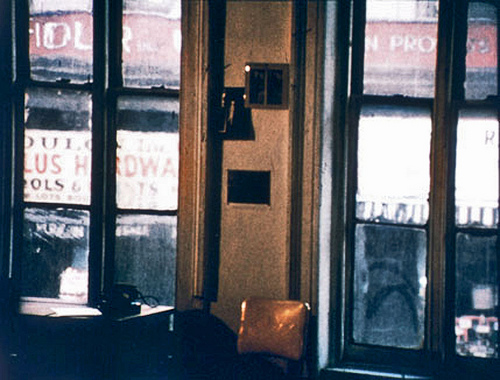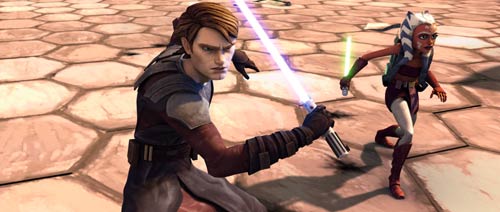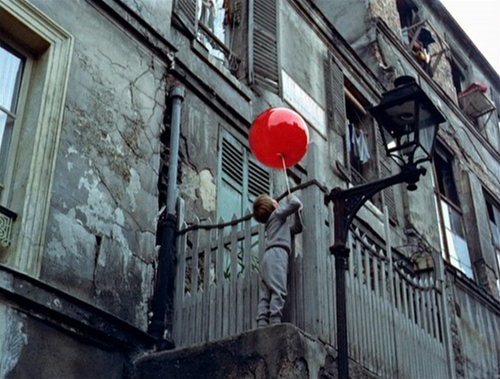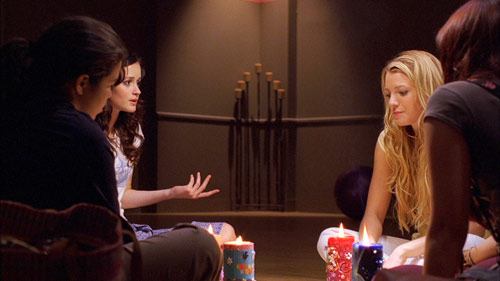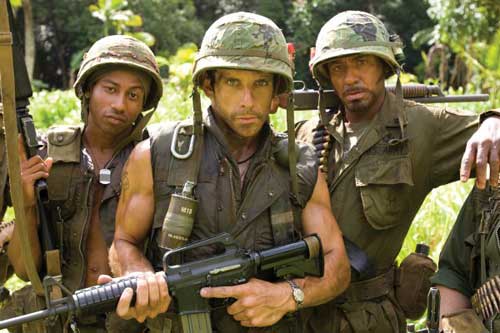
Comedies these days lack explosions and firearms, but Judd Apatow and Ben Stiller are on the job. Apatow's Pineapple Express and Stiller's Tropic Thunder, which have arrived in theaters during the dog days of August, are action-comedy hybrids that follow genre conventions even as they poke gentle fun at them. As a low-budget affair, Baghead, also in theaters, adds modestly-funded terror instead of top-dollar napalm to its comedy, but it too is a hybrid. Genres are back in vogue among hip young filmmakers, with rubrics so nice, they've followed them twice.
Very funny and very frivolous, Tropic Thunder is a big movie about making a big movie. Ben Stiller, Robert Downey Jr., and Jack Black star as actors shooting a Vietnam war film in the jungle. The film-within-the-film has a British director, played by Steve Coogan, who's in over his head, but the producer, played by Tom Cruise under heavy makeup, is turning the screws. He barks orders and spews invective over a video link from California, determined to whip this movie into the can. Desperate to comply, the emasculated director takes the radical step of 1) planting digital cameras in the jungle's trees and 2) dropping his stars in the middle of nowhere, with their costumes, fake guns, and a script outline. His last-ditch effort is to shoot their improvisations guerilla style.
The setup reads like the parody of a well-known piece of moviemaking folklore, one that's retold like a war story: the massive production beaten by the jungle. Francis Coppola's Apocalypse Now and Werner Herzog's Fitzcarraldo are as famous for their schedule overruns, uncontrollable stars, and maniacal directors as they are for the final products. Consequently, their associated behind-the-scenes documentaries -- Hearts of Darkness about Coppola's adventure and Burden of Dreams about Herzog's -- are as fascinating as the films themselves, and maybe more.
But Tropic Thunder's satire isn't so lofty. It's down in the undergrowth, skewering certain Hollywood personality types using the folklore as a frame. Critics have collectively tied themselves into knots trying to measure how close the movie comes to crossing various lines of good taste, but more interesting than whether it causes offense is how carefully, or carelessly, Stiller and company navigate a minefield of stereotypes. They're walking on eggshells one minute and riding roughshod the next.




